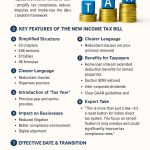Introduction:
Budgeting is the cornerstone of personal finance. Among the most popular frameworks is the 50/30/20 rule, which breaks down your income into three categories — needs, wants, and savings. But in 2025, with rising inflation, lifestyle inflation, and a gig-based economy, is this rule still relevant?
What is the 50/30/20 Rule?
This budgeting method, popularized by Elizabeth Warren, suggests:
- 50% for Needs: Rent, utilities, groceries, transport
- 30% for Wants: Entertainment, subscriptions, dining out
- 20% for Savings & Debt Repayment: Investments, emergency fund, loan EMIs
It’s simple, easy to remember, and works well for consistent salaried income.
Why the Rule May Need Revisiting in 2025
1. Inflation and Cost of Living
The economic landscape of 2025 is very different from when the 50/30/20 rule first gained popularity. The global inflationary wave triggered by post-pandemic recovery, geopolitical tensions, and rising energy prices has significantly impacted the cost of everyday living—especially in urban India.
Urban Cost Surge
In cities like Mumbai, Bangalore, Delhi, and Hyderabad, essential expenses—classified as “needs” in the 50/30/20 rule—have ballooned beyond 60% of an average individual’s take-home pay. Here’s a breakdown of how that happens:
- Rent alone can consume 30–40% of income in metro cities.
- Groceries and food inflation have seen 8–12% year-on-year increases in the past couple of years.
- Fuel and commute costs, especially for daily commuters, have risen due to fuel price hikes and limited public transport options in some areas.
- Health insurance premiums and basic medical expenses have also gone up due to inflation and increased lifestyle-related health issues.
Why 50% May No Longer Be Enough
The traditional rule expects you to limit your “needs” to 50% of your income. But for a family or even a single individual in an urban setup, hitting that target has become increasingly unrealistic. For example:
| Expense Type | Typical Monthly Cost (INR) | % of ₹1,00,000 Net Income |
|---|---|---|
| Rent (1 BHK in city) | ₹30,000–₹35,000 | 30–35% |
| Groceries & Food | ₹10,000–₹12,000 | 10–12% |
| Commute & Fuel | ₹5,000–₹6,000 | 5–6% |
| Utilities & Bills | ₹4,000–₹5,000 | 4–5% |
2. Gig Economy & Freelancing
The rise of the gig economy and freelancing culture has revolutionized the way people work and earn in 2025. From freelance designers and digital marketers to rideshare drivers and content creators, more people are now earning outside traditional 9–5 jobs.
But with this freedom comes income variability, which makes rigid budgeting systems like the 50/30/20 rule much harder to apply.
3. Lifestyle Inflation
One of the biggest challenges in sticking to the 50/30/20 rule today isn’t just rising prices — it’s rising expectations. As incomes grow, so do our spending habits. This phenomenon is called lifestyle inflation (also known as lifestyle creep), and it can silently derail even the most well-intentioned budgeting plans.
Common Signs of Lifestyle Inflation
- You used to cook at home but now regularly order food or eat out.
- Subscriptions you don’t use have piled up (OTT, fitness apps, software).
- You upgrade your phone/laptop every year “just because.”
- You start vacationing in luxury resorts instead of budget-friendly stays.
- EMI burden rises due to car upgrades or expensive gadgets.
These aren’t “bad” decisions by default. The problem arises when your wants start masquerading as needs, and your savings take a backseat.
How It Impacts the 50/30/20 Rule
The 50/30/20 rule relies on the idea that your income and expenses stay relatively proportional. But with lifestyle inflation:
- The “Wants” bucket (30%) often spills over into the “Needs” bucket.
- People reclassify wants as needs — gym memberships, iPhone EMIs, high-speed internet, etc.
- Savings (20%) shrink or vanish, since extra income goes toward upgrades.
Example: If your salary increases from ₹50,000 to ₹1,00,000 but your savings still stay at ₹10,000/month — you’ve doubled your income, but not your wealth-building.
4. Debt Culture
EMIs on phones, education loans, and BNPL schemes often leave less room for savings.
Adapting the Rule for 2025
Here are a few smart tweaks:
Reverse Engineer Your Savings
Save/invest first—aim for 20–30%—and adjust wants accordingly.
Use 60/20/20 or 70/20/10
In high-cost cities, consider 60% for needs, 20% savings, and 20% wants. Or 70/20/10 if you’re aggressively repaying debt.
Track & Reevaluate Monthly
Instead of fixed allocations, track your monthly expenses using budgeting apps and adjust dynamically.
Think in Percentages, Not Rupees
Budgeting by percentages allows you to scale your plan as your income grows.
Who Should Still Use the 50/30/20 Rule?
- Salaried individuals with predictable income
- Beginners in budgeting
- People with low debt levels
- Anyone needing a simple, consistent structure
Sample Budget on ₹1,00,000 Salary (50/30/20)
| Category | Amount | Examples |
|---|---|---|
| Needs | ₹50,000 | Rent, groceries, utilities |
| Wants | ₹30,000 | Dining, Netflix, gadgets |
| Savings | ₹20,000 | SIPs, emergency fund, debt EMIs |
Final Thoughts:
The 50/30/20 rule isn’t obsolete—it’s a solid starting point. But 2025 calls for flexibility. Your budgeting should evolve with your lifestyle, income, and goals. Think of this rule as a compass, not a cage.
CTA (Call to Action):
How do you budget in 2025? Have you tweaked the 50/30/20 rule to fit your lifestyle? Share your strategy in the comments!



